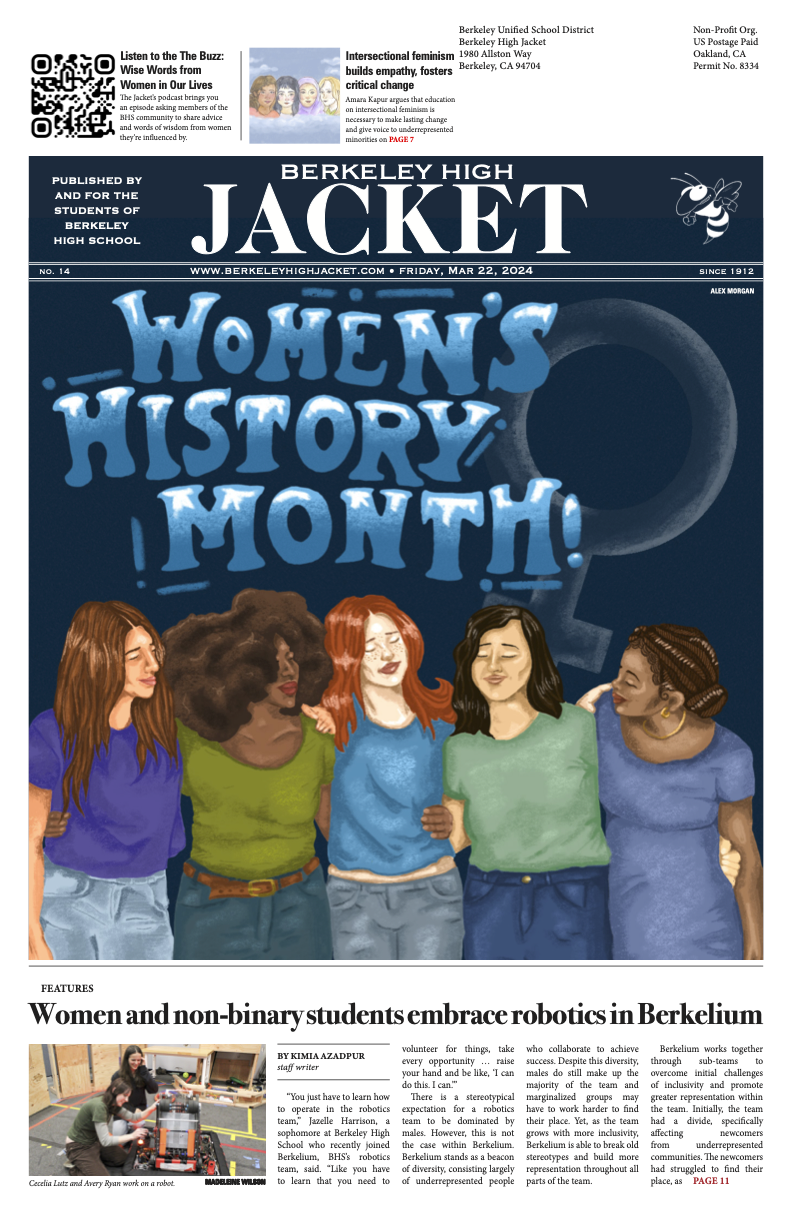“The breakdown in communication between the administration and the safety staff … put(s) everyone’s safety at risk,” a letter signed by nine of Berkeley High School’s school safety officers (SSOs) wrote. This letter, written on Dec. 12, 2024, is one of many documents provided to the Jacket that detail attempts that SSOs have made to bring concerns with safety on campus to administrators.
The role of an SSO is to “provide security, safety, and protection to students, personnel, equipment, and property,” according to a job description published online by Berkeley Unified School District. There are currently 14 SSOs employed by BHS, who collaborate with Dean of Students Yorda Weldeghiorgis. The Dean of Students supervises the SSOs and is meant to open a line of communication between them and school administration. Despite the fact that Weldeghiorgis is relatively new to her job — the 2024-25 school year being her first as the Dean of Students — she has created new methods to communicate with SSOs and address their concerns, along with having weekly meetings with the SSOs where they discuss prior incidents and overall campus safety. At the beginning of the school year in August of 2024, SSOs wrote a letter to administrators, saying that they believed these meetings were inadequate, though they have since improved. However, considering the fact that there has been an on-campus safety incident relating to weaponry in three of the last four school years, including one where a BHS student attempted to recruit other students for a mass shooting, the need for strong communication between administration and SSOs is apparent. The safety of approximately 3,200 students and over 300 staff members depends on the way SSOs and administrators handle safety incidents, and the school becomes less safe when communication between SSOs and the administration is lacking.
One such incident is detailed in the letter from Dec. 12, 2024, where the SSOs stated that when, on Dec. 11, 2024, guns had been found on campus, multiple members of their team were not notified in a timely manner and were instead “left on the front lines without any information.” This lack of communication, they said, was “unsafe … (and) could have cost a life.” While administration did not receive “any reports that either of (the) guns were brandished at BHS,” an email sent by BHS Principal Juan Raygoza read, this incident still brings to light worrying information as to how BHS administration has communicated with SSOs.
While the majority of safety incidents are not serious enough to merit informing the entire student body — so far this school year, there have been less than five — there are multiple smaller safety incidents occurring each day. The presence of SSOs keeps these incidents from escalating, and students and staff alike depend on them to keep BHS campus as safe as possible.
However, the communication issues between SSOs and administrators make it difficult for them to do their job. To bring about necessary changes to improve safety at BHS, SSOs this year have sent multiple letters to administrators, citing the “inadequate support from administration … (that) poses a huge threat to the safety of everyone on BHS campus,” a letter written on Sept. 18, 2024, signed by 13 of the 14 SSOs employed at BHS read. For something as important as the safety of everyone at BHS, it is imperative that any necessary changes be swift if they are to be implemented. There must be efficient ways for safety-related concerns to be brought to administrators, so SSOs are able to spend their time and energy where it matters most: keeping BHS students and staff safe.
BHS administration must prioritize communication with it's SSOs by creating and improving on methods through which SSOs can voice their concerns easily, efficiently, and safely. By making an effort to listen to and collaborate with SSOs, administrators have already begun the hard work. Continuing to reflect and improve on these lines of communication will be crucial to making BHS a safer place.




